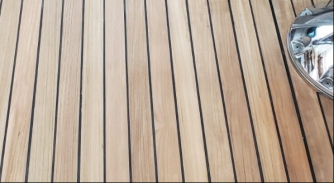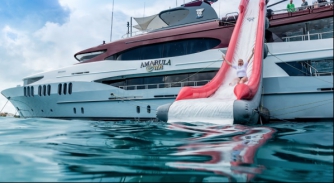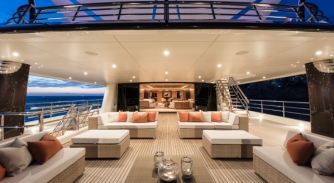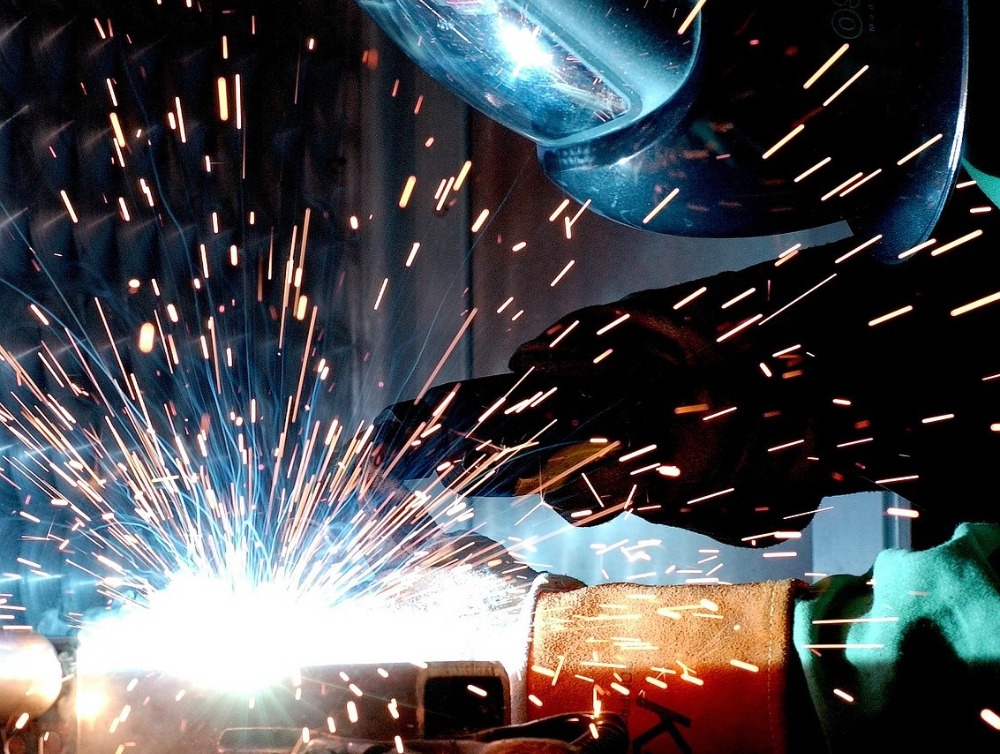Resetting the lifecycle curve
How can we create a new lifecycle curve with the right kind of investment?
That environmental regulations will have a profound effect on the superyacht fleet is a given, but it raises questions about the continued viability of certain vessels within the current fleet. Are there superyachts of sufficiently low value for which it will be difficult to convince owners and buyers to part with their money invest in them?
“The industry has followed and adopted regulations over the years when they have come into play, the most recent of which, of course, have been the IMO Tier III regulations. Tier III has created the need to switch out engines in some instances, as well as consider engine capacity, sizing and a variety of other challenges,” starts Toby Allies, joint managing director of Pendennis. “Unfortunately, I don’t have a crystal ball that will enable me to know exactly when the next step-change will occur, or exactly what it will look like, but the industry has proved itself to be adaptable and able to accommodate innovation.”
It could be argued that historically, the superyacht market has not always been the most proactive in terms of its willingness to react to change. However, it should be noted that as the levels of professionalism have risen throughout the industry, and businesses and stakeholders have increasingly taken on the mantle of being providers of knowledge and education, not just products and services, the levels of proactivity have also improved.
“There is always work to be done on helping the market to become more proactive, we have a role to play in that, as do the media and various other stakeholders, but we have at least seen the levels of preparedness increase in recent years,” continues Allies.
Through proactivity, professional operations, attentive crewing and a sufficient maintenance schedule, most superyachts should be able to have long and successful lifecycles whether they are owned privately, chartered or otherwise. By staying on top of maintenance value can be retained and lifecycles extended. However, is there a point at which the juice is no longer worth the squeeze? When the next round of environmental regulations come into force and significant changes are required to non-compliant vessels, will there be some superyachts that simply aren’t saving?
“You need to be quite careful with how you use your language in this area because there is definitely a growing trend towards the repurposing of vessels, be it commercial boats that have been converted or superyachts that have been given a new lease of life,” explains Allies. “Where you may have traditionally expected a superyacht to reach the end of its life, we are seeing vessels find new purpose and roles within the existing fleet. It is extremely hard to pinpoint in terms of value which vessels aren’t worth saving, it just comes down to emotional interest and levels of investment. There will of course be projects that reach the end of their lifecycle, but there are such a variety of factors that impact this that applying objective boundaries would be counterproductive.”
Invariably one cannot analyse the value of a superyacht without paying credence to some of the market’s various intangibles. A broker might say for instance that “a superyacht is worth what someone is willing to pay for it,” and they would be right. Emotional attachment to a particular vessel or a particular love for a unique design quirk on an older project might be all that is required to convince an owner to invest the required sums to bring a superyacht back up to standard and into the present.
“There are different stages in a superyachts life. When an owner takes to delivery you would expect the superyacht to begin its life covering a lot of miles and cruising widely, latterly you would expect the vessel to become more localised, before falling out of ownership and investment, at which point the question becomes: how can we create a new lifecycle curve with the right kind of investment, no matter the origins of the boat,” says Allies.
Regulatory changes will create challenges, they always do, but they may also create opportunities. At the point where the potential redundancy of certain vessels is on the horizon, the market should look to these vessels with new creative possibilities. Could vessels be updated and repurposed in a cost-efficient manner to become entry-level superyachts or support vessels for philanthropic/scientific activity? Could they find lives and purpose in other industries? Could multiple vessels be brought efficiently, updated and turned into charter fleets?
Profile links
NEW: Sign up for SuperyachtNewsweek!
Get the latest weekly news, in-depth reports, intelligence, and strategic insights, delivered directly from The Superyacht Group's editors and market analysts.
Stay at the forefront of the superyacht industry with SuperyachtNewsweek
Click here to become part of The Superyacht Group community, and join us in our mission to make this industry accessible to all, and prosperous for the long-term. We are offering access to the superyacht industry’s most comprehensive and longstanding archive of business-critical information, as well as a comprehensive, real-time superyacht fleet database, for just £10 per month, because we are One Industry with One Mission. Sign up here.
Related news

The teak problem
We explore the history of teak to kickstart a series of articles on alternative materials and solutions
Business

Bi-weekly brokerage analysis
While numbers of sales and combined value have fallen, the brokerage market continues to perform admirably
Fleet

Raising the bar of refit…by grand design
The steps Winch Design has taken to play a major role in the refit sector
Fleet

A token gesture
How the tokenisation of physical assets on the blockchain is changing the superyacht transaction landscape
Owner

A bite-sized guide to the ‘perfect’ charter yacht
What are the essential elements of a charter yacht that appeal to clients?
Owner
.jpg)
Boat Shows: Too many? Too few? Or just right?
Has the pandemic caused lasting change or will the market revert to type where boat shows are concerned?
Business
Related news
The teak problem
4 years ago
Bi-weekly brokerage analysis
4 years ago
Raising the bar of refit…by grand design
4 years ago
A token gesture
4 years ago
Boat Shows: Too many? Too few? Or just right?
4 years ago
NEW: Sign up for
SuperyachtNewsweek!
Get the latest weekly news, in-depth reports, intelligence, and strategic insights, delivered directly from The Superyacht Group's editors and market analysts.
Stay at the forefront of the superyacht industry with SuperyachtNewsweek




